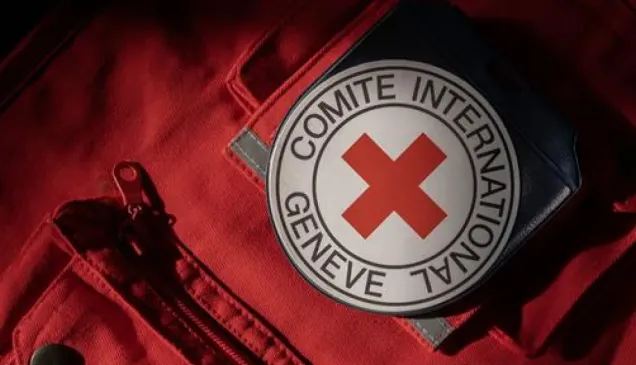The International Committee of the Red Cross (ICRC) is grateful for the opportunity to address the First Committee again this year. To the critically important issues that will be discussed here, the ICRC brings its experience as a humanitarian organization working to protect and assist the victims of armed conflict and its expertise in international humanitarian law (IHL).
The ICRC has welcomed the United Nations Secretary-General's Agenda for Disarmament ("Securing our Common Future"). Like the Secretary-General, the ICRC firmly believes that disarmament and arms limitation are not just tools to maintain international peace and security, and to prevent or end armed conflict. They are also critical means to mitigate the impact of armed conflict when it occurs. This is also the aim of IHL.
Respecting and ensuring respect for IHL in armed conflict, including its rules prohibiting or limiting the use of certain weapons, is a fundamental responsibility of States and cuts across all of the important issues that will be discussed here in the First Committee.
This year marks the 150th anniversary of one of the earliest IHL treaties to prohibit a weapon: the Saint Petersburg Declaration of 1868. In commemoration, the ICRC and the Interparliamentary Assembly of the Commonwealth of Independent States are jointly organizing a high-level conference in St Petersburg at the end of November.
The 1868 Saint Petersburg Declaration is famous not just for prohibiting a new weapon – exploding bullets – that had not yet been used on the battlefield, but also for reaffirming the humanitarian principles applicable to warfare and weapons of war, and the limits at which "the necessities of war ought to yield to the requirements of humanity". But the Declaration is equally remarkable for how it came about: it was adopted by military powers convened by Russia for the purpose of prohibiting a new weapon that it had itself developed but which, it had concluded, was morally unacceptable.
All States today should take inspiration from this example, by exercising responsible leadership, taking bold initiatives, reaching out to adversaries and work constructively and collaboratively to achieve progress on fulfilling long-standing disarmament commitments, progress that is essential to safeguarding peace and security and our common humanity.
Such responsible action is needed more than ever, if we are to make concrete progress towards the universal goal of a world free of nuclear weapons.
The ICRC and the broader International Red Cross and Red Crescent Movement have long called for the prohibition and elimination of nuclear weapons. Our call is rooted in our first-hand observation of the horrific consequences of the atomic bombings in 1945, our knowledge that we would be unable to provide an adequate humanitarian response if nuclear weapons were ever to be used again, and their general incompatibility with IHL. Today, the evidence is clear that even a limited use of nuclear weapons would have devastating, long-lasting and irreparable humanitarian consequences. The only realistic means of safeguarding against nuclear catastrophe is nuclear disarmament. It is a humanitarian imperative.
Our Movement therefore calls on all States to sign and ratify the 2017 Treaty on the Prohibition of Nuclear Weapons (TPNW), as a concrete and essential step towards implementing long-standing nuclear disarmament obligations, notably those under Article VI of the Treaty on the Non-Proliferation of Nuclear Weapons (NPT), which the TPNW complements. By joining the TPNW, States send a clear signal that any use, threat of use, or possession of nuclear weapons is unacceptable in humanitarian, moral and now legal terms. This supports and reinforces the NPT's non-proliferation and disarmament objectives.
Our Movement calls on those States unable to join the TPNW at this time – particularly those that possess nuclear weapons, and their allies – to take interim steps to prevent the use of nuclear weapons, in accordance with existing commitments. On 23 April, the president of the ICRC, Peter Maurer, appealed to States possessing nuclear weapons to urgently reduce nuclear risks through a range of concrete actions. These actions include: unequivocal commitments never to use nuclear weapons first; removal of nuclear weapons from "hair trigger" alert status; re-establishment of joint early warning centers to clarify in real-time unexpected and potentially destabilizing events; and progressive steps to reduce the role of nuclear weapons in security policies. The ICRC appeals to nuclear weapon States to take their responsibilities to protect their populations and humanity as a whole, by urgently implementing these measures, many of which derive from the NPT 2010 Action Plan. We urge them to report to the 2020 NPT Review Conference on progress they have made on risk reduction measures, and any concrete steps they have taken towards nuclear disarmament.
The use of poison as a means of warfare – whether nerve agents, mustard gas, chlorine or any other toxic chemical – is absolutely prohibited by customary IHL, binding on all parties to all armed conflicts. Moreover, nearly all States are today party to the Chemical Weapons Convention (CWC). Yet the universal norm prohibiting the use of chemical weapons risks being weakened by recent instances of use. In particular, the ICRC remains deeply concerned by the repeated use of chemical weapons, notably in Syria. Last year ICRC field teams also treated victims of chemical weapons in Iraq. The ICRC firmly condemns any use of chemical weapons as an unacceptable disregard for humanity and for the rule of law. The ICRC again appeals to all parties to armed conflicts and to States Parties of the CWC to uphold this prohibition.
Over the past year, concerns have remained high over criminal, hostile and other malicious use of cyberspace. In consultation with experts, and by drawing on specific events and trend analysis, the ICRC is working to develop a more in-depth assessment of the potential human costs of cyber operations, especially during armed conflicts, with a view to further contributing to debates on legal and policy responses.
International law, including but not limited to IHL, already protects civilians against cyber operations. States must ensure that any capability they develop, or operation they carry out, remains within the limits imposed by law. Still, common understandings are needed on the scope of existing protections. We are encouraged in this regard by proposals to reconvene the Group of Governmental Experts (GGE) on Developments in the Field of Information and Telecommunications in the Context of International Security. The views of the legal, policy and scientific communities – and of academia, industry and other relevant stakeholders – can help inform discussions at the international level; the ICRC remains ready to lend its expertise in these matters. However, discussions on the limits imposed by IHL on the resort to cyber operations during armed conflicts should not be interpreted as encouraging the weaponization of cyberspace or as legitimizing cyber warfare, which – like any other use of force – remains constrained by the United Nations Charter.
The same holds true for outer space. During the first session of the GGE on Further Practical Measures for the Prevention of an Arms Race in Outer Space, held in Geneva in August, the ICRC was able to share its perspective on the applicability of IHL – and the limits imposed by this body of law – to the use of means and methods of warfare in outer space. IHL seeks to limit the effects on civilians of any type of warfare, notably by prohibiting the targeting of civilians and civilian objects, by prohibiting indiscriminate and disproportionate attacks, and by requiring that certain precautions be taken while carrying out attacks. These rules apply to the use of means and methods of warfare in outer space like anywhere else. However, the unique environment of outer space and the fact that civilian life on earth, including life-saving activities such as health-care emergency services, increasingly rely on space infrastructure creates specific vulnerabilities for civilians. Concerns include the knock-on effects of disabling civilian or dual-use satellites, and the risk to such infrastructure from space debris created by kinetic attacks on space objects. In the ICRC's view, the potentially severe disruptions to civilian life on earth that would ensue must be carefully considered whenever the military use of outer space is discussed.
At the second meeting of the CCW Group of Governmental Experts on Lethal Autonomous Weapons Systems, which took place in Geneva in August this year, States made some progress in addressing the legal and ethical challenges created by weapons with autonomy in the 'critical functions' of selecting targets. Among agreed guiding principles, the applicability of IHL and a human-centric approach were reaffirmed, and it was recognized that "human responsibility for decisions on the use of weapons systems must be retained".
This provides a solid basis for working towards internationally agreed limits to autonomy in weapon systems. The ICRC believes that such limits are necessary for addressing legal, ethical and humanitarian concerns. States must now tackle a difficult question: what type and degree of human control is needed to ensure compliance with international law, and ethical acceptability? Formulating a specific positive obligation for human control will help ensure that any future developments are both compatible with our laws and acceptable to our values.
More broadly, the aim must be to preserve the central role of human judgement in the conduct of hostilities, as is required to comply with IHL. This is crucial given the increasing emphasis on the use of data-driven artificial intelligence (AI) algorithms to inform life and death decisions in armed conflict. After all, it is humans, not machines, who are responsible for complying with the law.
The ICRC welcomes the establishment by the Secretary-General of a High Level Panel on Digital Cooperation, and hopes that the Panel will include in its deliberations the risks posed by the militarization and weaponization of new technologies, such as AI and cyber capabilities.
While much attention is being paid to new technologies of warfare, old technologies continue to maim and kill tens of thousands of people each year in armed conflicts that are becoming more protracted and urbanized.
Indeed, hostilities are increasingly fought in populated areas, but belligerents have not adapted their means of warfare to these environments. Heavy explosive weapons – notably large bombs, rockets and missiles; inaccurate weapon systems such as mortars and artillery; and weapons designed to deliver multiple munitions over a wide area (multi-barrel rocket launchers) – are generally not a cause for concern when employed in open battlefields. But they are generally inappropriate for use in populated areas owing to their wide-area effects and the consequent significant likelihood that they will strike military objectives and civilians and civilian objects without distinction.
The ICRC continues to witness the devastating effects, direct and indirect, of using explosive weapons in populated areas: high levels of civilian death and injury (including lifelong disabilities), destruction of critical civilian infrastructure and consequent disruption of services essential to the survival of the civilian population (such as vital health care and water and electricity supply), and displacement. These effects are reasonably foreseeable and warring parties have a legal and moral duty to take measures to avoid them.
The ICRC once again calls on States and parties to armed conflicts to avoid the use of heavy explosive weapons in populated areas, owing to the significant likelihood of indiscriminate effects. This "avoidance principle" suggests a presumption of non-use of such weapons because of the high risk of harm to civilians, which could be reversed if sufficient mitigation measures were taken to lower such risk to an acceptable level – notably, targeting and weaponeering measures to significantly reduce the impact area of the explosive weapon in question. The "avoidance principle" should be accompanied by concrete measures and guidance (policies and practices) to be prepared in advance of armed conflicts and military operations, and faithfully implemented when conducting hostilities.
The ICRC welcomes all initiatives aimed at addressing the unacceptable harm caused by the use of explosive weapons in populated areas. We are grateful in particular for the efforts made by Austria and Germany to lead discussions aimed at identifying good practices.
Arms transfers to parties to brutal armed conflicts continue unabated and without regard to whether these parties comply with IHL. This despite the solid international framework in place that aims to halt the flow of weapons to belligerents that are likely to commit serious violations of IHL and human rights: this framework includes the Arms Trade Treaty, which the ICRC calls on all States to join, as well as political commitments such as those in the United Nations Programme of Action on Small Arms and Light Weapons. But this framework for responsible arms transfers is under enormous pressure, with economic, commercial and strategic interests too often taking precedence over civilian protection, peace, security and stability.
Arms suppliers have a duty to consider the risk of the weapons they provide being used to commit, or facilitate, serious violations of human rights and IHL. Put simply, there should be no transfers of arms to warring parties if they do not abide by the rules of war. The Arms Trade Treaty and other applicable instruments can stop weapons falling into the wrong hands only if the rules are applied in good faith, consistently, and without bias or discrimination – by decision-makers at every level.
Let me conclude Mr. Chair, by reiterating that reducing the human suffering caused by conventional arms depends on all States joining and faithfully implementing the existing and robust international instruments governing these weapons. The forthcoming Review Conferences of the Anti-Personnel Mine Ban Convention (APMBC) and the Convention on Cluster Munitions (CCM), in 2019 and 2020 respectively, present the opportunity for States that have not yet done so to join these IHL treaties, which have been largely successful in protecting civilians from the indiscriminate harm caused by these weapons.
More States must join and faithfully implement the Convention on Certain Conventional Weapons (CCW) and its five Protocols, which prohibit or limit the use of weapons that may have indiscriminate effects on civilians or may cause excessive suffering to combatants. Last December, the ICRC and the Indian Society of International Law, with the support of the Ministry of External Affairs of the Government of India, jointly organized an international conference to further understanding of the CCW and its Protocols, and to discuss issues currently on the CCW's agenda. The conference was attended by representatives of 24 States – mainly from South Asia, East Asia, the Persian Gulf and East Africa – the United Nations Office for Disarmament Affairs, and a range of international organizations. We are pleased to announce that the report of the conference is now available.



